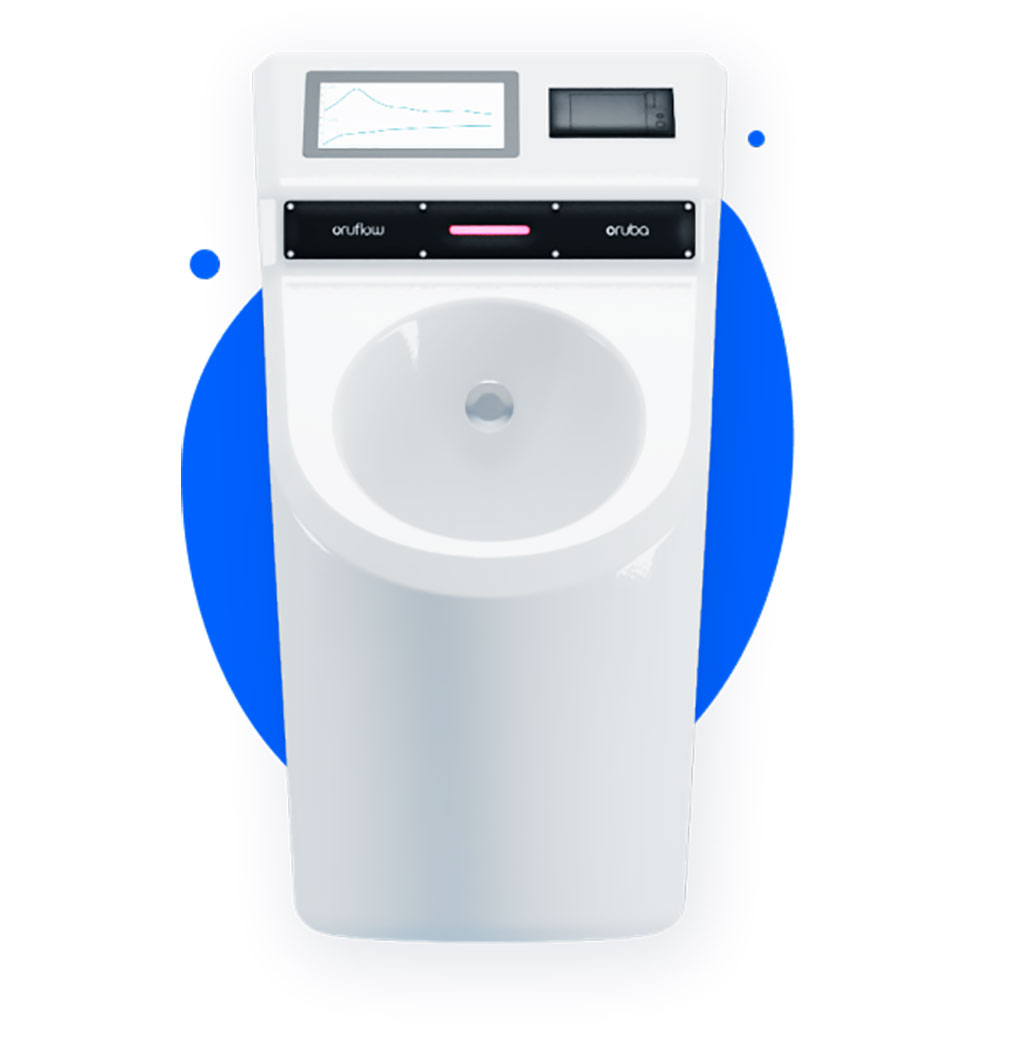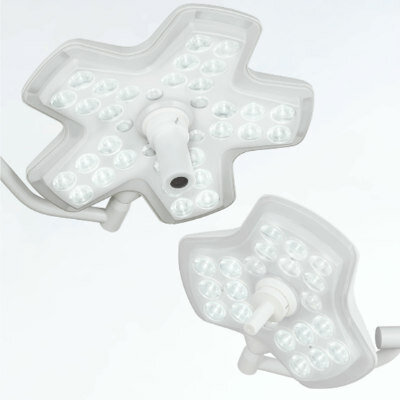Novel Flowmeter Streamlines Urine Flow Screening
|
By HospiMedica International staff writers Posted on 16 Nov 2021 |

Image: The Oruflow fully automated, contactless, uroflowmetry device (Photo courtesy of Oruba)
An innovative self-operating device measures urine flow rate, providing important indicators for lower urinary tract symptoms (LUTS).
The Oruba (Ankara, Turkey) Oruflow is a fully automated, contactless, uroflowmetry device that requires no human intervention for function and sanitation. It has a built-in barcode scanner that registers the patient and collects all necessary information; textual, audio, and visual tutorials on using the device to ensure that the patient is adequately informed; and self-cleaning and sanitizing, preparing the device for use by the next patient in under a minute.
The internet-of-things (IoT)-supported uroflowmeter is designed to increase patient comfort and privacy. Oruflow starts the screening automatically, prepares a report while the patient is finishing up, prints it out for patient convenience, and also sends a digital version to the hospital information system (HIS). For clinics that do not use a barcode scanner, registration can be completed through Oruflow software, which can be used on any device with an internet connection; test results can also be examined on those devices.
“Oruba is a technology-focused startup with an interdisciplinary team of computer, electronics, mechanical and biomedical engineering, physics, industrial design, urology, and emergency care specialists,” stated the company. “Oruba is devoted to creating advanced medical devices that capture all bioinformation in human excreta. We are constantly working to develop innovations that can be highly scalable and have not been developed and in the world.”
Uroflowmetry is an essential tool to assess bladder and sphincter function. It requires the patient to urinate into a funnel-shaped device to measure amount of urine passed, urination speed (expressed in milliliters per second), and the length of time it takes to empty the whole bladder. Flow rates can help determine potential existence of diseases, such as benign prostate hyperplasia (BPH), bladder cancer, prostate cancer, neurogenic bladder dysfunction, and urinary blockage.
Related Links:
Oruba
The Oruba (Ankara, Turkey) Oruflow is a fully automated, contactless, uroflowmetry device that requires no human intervention for function and sanitation. It has a built-in barcode scanner that registers the patient and collects all necessary information; textual, audio, and visual tutorials on using the device to ensure that the patient is adequately informed; and self-cleaning and sanitizing, preparing the device for use by the next patient in under a minute.
The internet-of-things (IoT)-supported uroflowmeter is designed to increase patient comfort and privacy. Oruflow starts the screening automatically, prepares a report while the patient is finishing up, prints it out for patient convenience, and also sends a digital version to the hospital information system (HIS). For clinics that do not use a barcode scanner, registration can be completed through Oruflow software, which can be used on any device with an internet connection; test results can also be examined on those devices.
“Oruba is a technology-focused startup with an interdisciplinary team of computer, electronics, mechanical and biomedical engineering, physics, industrial design, urology, and emergency care specialists,” stated the company. “Oruba is devoted to creating advanced medical devices that capture all bioinformation in human excreta. We are constantly working to develop innovations that can be highly scalable and have not been developed and in the world.”
Uroflowmetry is an essential tool to assess bladder and sphincter function. It requires the patient to urinate into a funnel-shaped device to measure amount of urine passed, urination speed (expressed in milliliters per second), and the length of time it takes to empty the whole bladder. Flow rates can help determine potential existence of diseases, such as benign prostate hyperplasia (BPH), bladder cancer, prostate cancer, neurogenic bladder dysfunction, and urinary blockage.
Related Links:
Oruba
Latest Critical Care News
- Pulse Oximeter Index Offers Non-Invasive Guides for Fluid Therapy
- 'Universal' Kidney to Match Any Blood Type
- Light-Based Technology to Measure Brain Blood Flow Could Diagnose Stroke and TBI
- AI Heart Attack Risk Assessment Tool Outperforms Existing Methods
- Smartphone Imaging System Enables Early Oral Cancer Detection
- Swallowable Pill-Sized Bioprinter Treats GI Tract Injuries

- Personalized Brain “Pacemakers” Could Help Patients with Hard-To-Treat Epilepsy
- Microscopic DNA Flower Robots to Enable Precision Medicine Delivery
- Origami Robots to Deliver Medicine Less Invasively and More Effectively
- Improved Cough-Detection Technology Aids Health Monitoring
- AI Identifies Children in ER Likely to Develop Sepsis Within 48 Hours
- New Radiofrequency Therapy Slows Glioblastoma Growth
- Battery-Free Wireless Multi-Sensing Platform Revolutionizes Pressure Injury Detection
- Multimodal AI to Revolutionize Cardiovascular Disease Diagnosis and Treatment
- AI System Reveals Hidden Diagnostic Patterns in Electronic Health Records
- Highly Sensitive On-Skin Sensing Monitor Detects Vitamin B6 and Glucose in Sweat
Channels
Surgical Techniques
view channel
Robotic Assistant Delivers Ultra-Precision Injections with Rapid Setup Times
Age-related macular degeneration (AMD) is a leading cause of blindness worldwide, affecting nearly 200 million people, a figure expected to rise to 280 million by 2040. Current treatment involves doctors... Read more
Minimally Invasive Endoscopic Surgery Improves Severe Stroke Outcomes
Intracerebral hemorrhage, a type of stroke caused by bleeding deep within the brain, remains one of the most challenging neurological emergencies to treat. Accounting for about 15% of all strokes, it carries... Read morePatient Care
view channel
Revolutionary Automatic IV-Line Flushing Device to Enhance Infusion Care
More than 80% of in-hospital patients receive intravenous (IV) therapy. Every dose of IV medicine delivered in a small volume (<250 mL) infusion bag should be followed by subsequent flushing to ensure... Read more
VR Training Tool Combats Contamination of Portable Medical Equipment
Healthcare-associated infections (HAIs) impact one in every 31 patients, cause nearly 100,000 deaths each year, and cost USD 28.4 billion in direct medical expenses. Notably, up to 75% of these infections... Read more
Portable Biosensor Platform to Reduce Hospital-Acquired Infections
Approximately 4 million patients in the European Union acquire healthcare-associated infections (HAIs) or nosocomial infections each year, with around 37,000 deaths directly resulting from these infections,... Read moreFirst-Of-Its-Kind Portable Germicidal Light Technology Disinfects High-Touch Clinical Surfaces in Seconds
Reducing healthcare-acquired infections (HAIs) remains a pressing issue within global healthcare systems. In the United States alone, 1.7 million patients contract HAIs annually, leading to approximately... Read moreHealth IT
view channel
Printable Molecule-Selective Nanoparticles Enable Mass Production of Wearable Biosensors
The future of medicine is likely to focus on the personalization of healthcare—understanding exactly what an individual requires and delivering the appropriate combination of nutrients, metabolites, and... Read moreBusiness
view channel
Philips and Masimo Partner to Advance Patient Monitoring Measurement Technologies
Royal Philips (Amsterdam, Netherlands) and Masimo (Irvine, California, USA) have renewed their multi-year strategic collaboration, combining Philips’ expertise in patient monitoring with Masimo’s noninvasive... Read more
B. Braun Acquires Digital Microsurgery Company True Digital Surgery
The high-end microsurgery market in neurosurgery, spine, and ENT is undergoing a significant transformation. Traditional analog microscopes are giving way to digital exoscopes, which provide improved visualization,... Read more
CMEF 2025 to Promote Holistic and High-Quality Development of Medical and Health Industry
The 92nd China International Medical Equipment Fair (CMEF 2025) Autumn Exhibition is scheduled to be held from September 26 to 29 at the China Import and Export Fair Complex (Canton Fair Complex) in Guangzhou.... Read more














